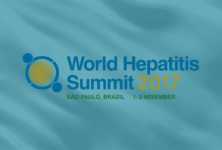A combination of interventions for HIV that reflect alternative routes to program strengthening and encourage country programs to evaluate costs, impact and clinical benefits of immediate initiation should be prioritized over individual high-cost interventions such as the universal test-and-treat strategy in regions with limited resources, according to recent findings published in Lancet HIV.
“Evidence about the effectiveness of individual interventions is only partly informative about the best strategy to improve HIV care, and most studies have not been able to measure the eventual population-health benefits resulting from improved provision of care,” Jack J. Olney, MSc, from the department of infectious disease epidemiology at Imperial College London, and colleagues wrote. “Definitions for optimal strategies to improve HIV care most efficiently in health systems require insight into the sources of HIV mortality and morbidity for patients at each stage of care and a comparison of the population-level health impact of a range of candidate interventions that act at different stages of care.”
To determine optimal HIV treatment programs in sub-Saharan Africa, the researchers examined the state of the HIV epidemic and care cascade in Kenya, and assessed the impact of interventions in isolation and combinations. They constructed an individual-based microsimulation model to simulate the cost and effect of interventions at various stages of HIV care, including improvements in diagnosis, linkage to care, retention and adherence to ART, immediate ART eligibility, and a universal test-and-treat strategy.
Their model predicted that among people dying of AIDS-related causes between 2010 and 2030, 61% will have initiated treatment, 25% will not have been diagnosed and 14% will have been diagnosed but not treated.
While any individual intervention may have been effective, it averted only a small percentage of deaths because other flaws in care attenuate the effect, according to the researchers. They found that a combination of five interventions, which included improved linkage, point-of-care CD4 testing, voluntary counselling and testing with point-of-care CD4, and outreach efforts to improve retention in care, would have a larger impact than a universal test-and-treat intervention. The combination of interventions prevented 1.10 million disability-adjusted life-years (DALYs) and 25% of new infections. Although the combination of interventions cost 22% more than the universal test-and-treat approach, the researchers reported that it would be more cost-effective ($571 per DALY averted; 46% gross domestic product per capita vs. $1,760 per DALY averted; 142% GDP per capita).
“Although the results presented rely largely on HIV health-care data from western Kenya, we believe that our results will have the same broad relevance to other settings with large generalized epidemics in rural areas with an established ART programme,” Olney and colleagues concluded. “As countries … consider moves to new guidelines, integrating all available care cascade data with the perspective of improving health for the population is going to be especially important.”
It is still unclear whether interventions designed to improve linkage and retention in HIV care are long-lasting, Matthew P. Fox, DSc, from the department of epidemiology and global health at Boston University School of Public Health warned in a related editorial.
“Identification of new effective approaches to improve retention throughout the care cascade and work rigorously measure the combined benefits of multifaceted approaches over the long term should be done to ensure that attrition is reduced, not simply delayed,” he wrote.
Olney JJ, et al. Lancet HIV. 2016;doi:10.1016/S2352-3018(16)30120-5.
By Savannah Demko


 ПОИСК ПО САЙТУ
ПОИСК ПО САЙТУ  поиск по ресурсному центру
поиск по ресурсному центру 



